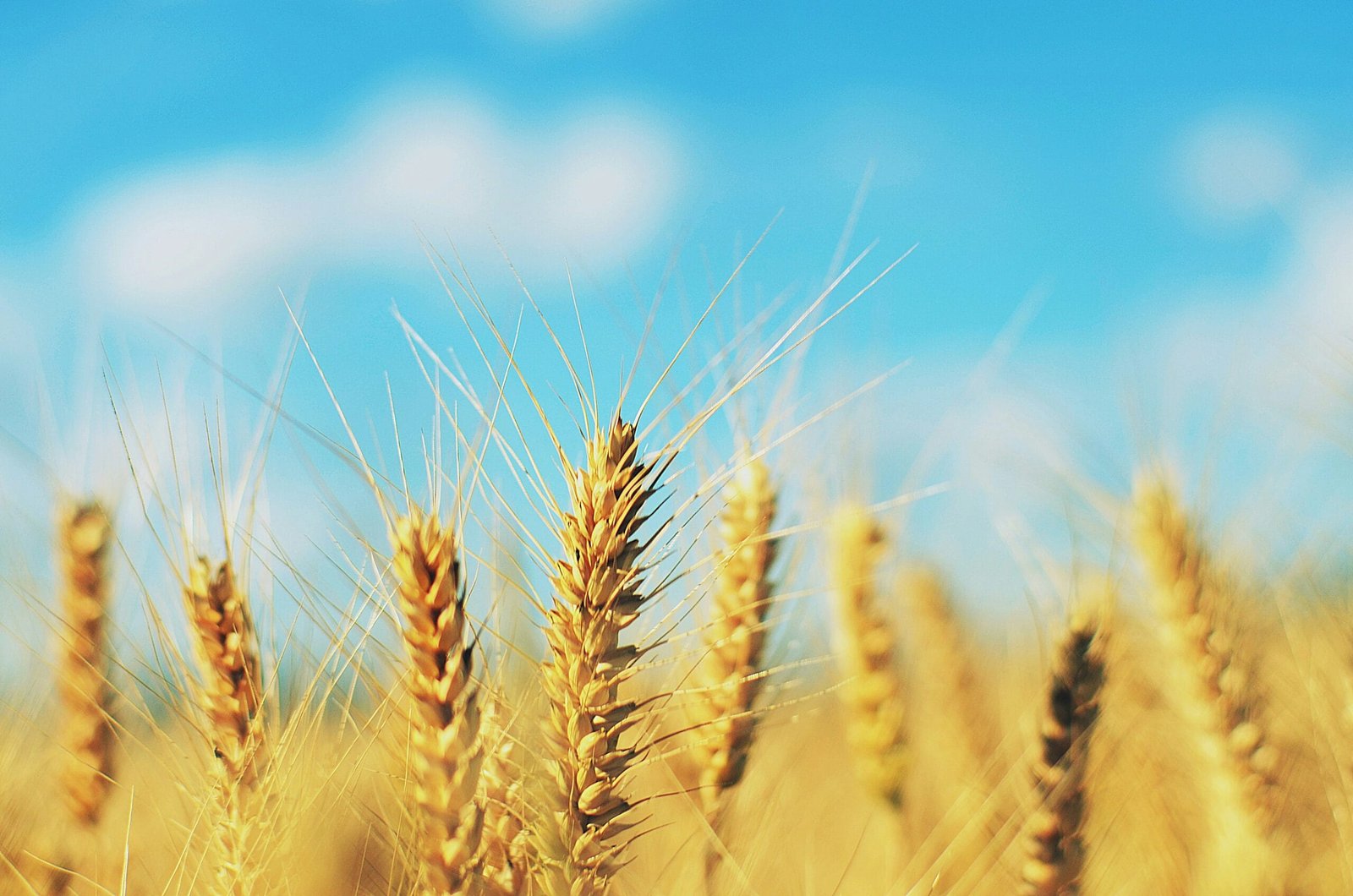Introduction to Grains in Tibet
Tibet, with its distinctive geography and challenging climate, has cultivated a rich agricultural heritage that prominently features various grains. Among the most significant grains grown in the region, barley, wheat, and rice stand out as staples that have shaped the culinary landscape of Tibetan society. The topography of Tibet is primarily mountainous; however, the warmer river valleys provide a unique microclimate that supports the growth of these essential grains. The diverse altitudinal ranges lead to variations in climate, allowing for agricultural practices that differ across the region.
Barley, specifically, holds a place of cultural reverence and is considered the cornerstone of Tibetan agriculture. Often used to prepare traditional foods like tsampa, a roasted barley flour, it is a vital source of nourishment. In addition to barley, wheat is cultivated in the more temperate areas, where it is transformed into a variety of dishes, further illustrating the adaptability of Tibetan cuisine. Rice, while not as prevalent as barley or wheat, is widely consumed, particularly in lower-altitude regions and has become an integral part of the diet in urban centers where it is often paired with local dishes.
Other lesser-known grains such as millet and buckwheat are also grown in certain areas, contributing to the agricultural diversity of Tibet. The importance of these grains goes beyond mere sustenance; they are deeply woven into the cultural fabric of Tibetan life. Festivals, rituals, and social gatherings often feature dishes made from these grains, reflecting their significance in local traditions. As staples of the Tibetan diet, these grains play a pivotal role in both nutrition and cultural identity, illustrating the intersection of agriculture and heritage in this unique region.
Wheat: The Backbone of Tibetan Cuisine
Wheat holds a distinguished position in Tibetan cuisine, serving as an essential staple that supports the daily dietary needs of the population. The grains grown in the Tibetan Plateau are generally whole wheat, which offers numerous nutritional advantages compared to refined alternatives. Whole wheat contains a higher concentration of fiber, vitamins, and minerals, making it a critical component in promoting overall health and well-being among the Tibetan people.
The preparation of traditional Tibetan bread and noodles showcases wheat’s versatility in culinary applications. One of the most famous types of bread is “balep,” a thick whole wheat flatbread, which is typically baked in a traditional clay oven called a “tandoor.” This method not only ensures a distinct flavor but also imparts a unique texture that complements various dishes. Another popular wheat product is “thukpa,” a hearty noodle soup that is particularly enjoyed during the colder months. The noodles, made from whole wheat, are often combined with seasonal vegetables and flavorful broth, reflecting the ingenuity of Tibetan cooking.
In addition to bread and noodles, wheat also plays a role in the preparation of various dumplings and pastries, embodying the regional palate’s love for comfort food. Local variations exist, with some communities adding ingredients like yak cheese or vegetables to create unique flavor profiles that marry tradition with innovation. Consumed regularly at breakfast or as part of main meals, wheat not only fuels the body but also unites families and communities through shared culinary experiences.
The nutritional benefits of wheat extend beyond mere sustenance; it is a source of complex carbohydrates that provide energy for the physically demanding lifestyles prevalent in the region. As a staple woven into the fabric of Tibetan culture, wheat is more than just an ingredient; it is a cornerstone that supports communal bonds and a vibrant culinary heritage.
Rice and Its Versatile Applications
Rice serves as a cornerstone in Tibetan gastronomy, highly regarded for its versatility and nutritional value. The primary type of rice cultivated in Tibet is known as ‘zang’, which adapts well to the region’s high altitude and colder climate. Traditional methods of cultivation involve manual sowing and harvesting, practices that have been passed down through generations. These time-honored techniques not only preserve the quality of the rice but also bolster its flavor, distinguishing it from rice grown in lower-altitude regions.
The integration of rice into Tibetan cuisine transcends mere sustenance. It is a vital component in many customary dishes, such as ‘thukpa’, a hearty noodle soup, and ‘momos’, which are Tibetan dumplings often filled with meat or vegetables. During special occasions, such as festivals and family gatherings, rice takes on an even more significant role. It is often prepared as ‘sha phaley’, a fried rice pancake stuffed with seasoned meats or vegetables, highlighting its adaptability to different cooking styles.
Beyond its culinary applications, rice holds symbolic weight in Tibetan culture. It is often offered during rituals and ceremonies, representing prosperity and abundance. Nutritionally, rice is praised for its role as a source of carbohydrates, providing the energy needed for the challenging lifestyles many Tibetans lead. Additionally, it is low in fat and gluten-free, allowing it to be an inclusive option for various dietary needs.
Through its diverse applications, from everyday meals to festive preparations, rice continues to be an essential grain that underscores the rich tapestry of Tibetan culinary heritage. Its enduring presence in meals, combined with its cultural significance, reinforces rice’s value as both a food staple and a symbol of communal identity.
Other Grains: Barley and Beyond
In the diverse agricultural landscape of Tibet, barley stands as one of the most significant and culturally cherished grains. Known locally as “sha,” barley has been cultivated in the region for thousands of years, adapting well to the harsh climatic conditions and elevated altitudes. This staple grain serves as a crucial component in the traditional Tibetan diet, widely used to prepare dishes like tsampa, a roasted barley flour that serves as a portable and nutritious meal for nomadic communities. Tsampa is often mixed with tea or water, providing both energy and sustenance, making it a core element of daily nutrition in Tibetan households.
Beyond barley, Tibet is home to a variety of lesser-known grains, each contributing to the region’s culinary diversity. Grains such as millet and quinoa have gained recognition for their robust nutritional profiles, offering high levels of protein and essential vitamins. These grains are cultivated using traditional methods that emphasize sustainability and minimal reliance on chemical fertilizers. The shift towards organic farming practices is not only a response to modern environmental concerns but also a means of preserving ancestral agricultural knowledge.
The nutritional value of these grains cannot be overstated. Barley, for example, is rich in dietary fiber, antioxidants, and various micronutrients, promoting health benefits such as improved digestion and a reduced risk of chronic diseases. Similarly, other grains like millet and quinoa provide a gluten-free alternative, making them essential for inclusive dietary practices. Additionally, the cultural and historical significance of these grains in Tibetan heritage cannot be overlooked; they embody the connection between the Tibetan people and their landscape, serving not just as food, but as integral elements of identity.
As modern cuisine continues to evolve, there is a growing interest in incorporating these traditional grains into contemporary dishes. Their unique flavors and nutritional benefits present ample opportunities for culinary innovation, bridging the gap between heritage and modern gastronomy while ensuring the cultural legacy of Tibetan grains flourishes.







